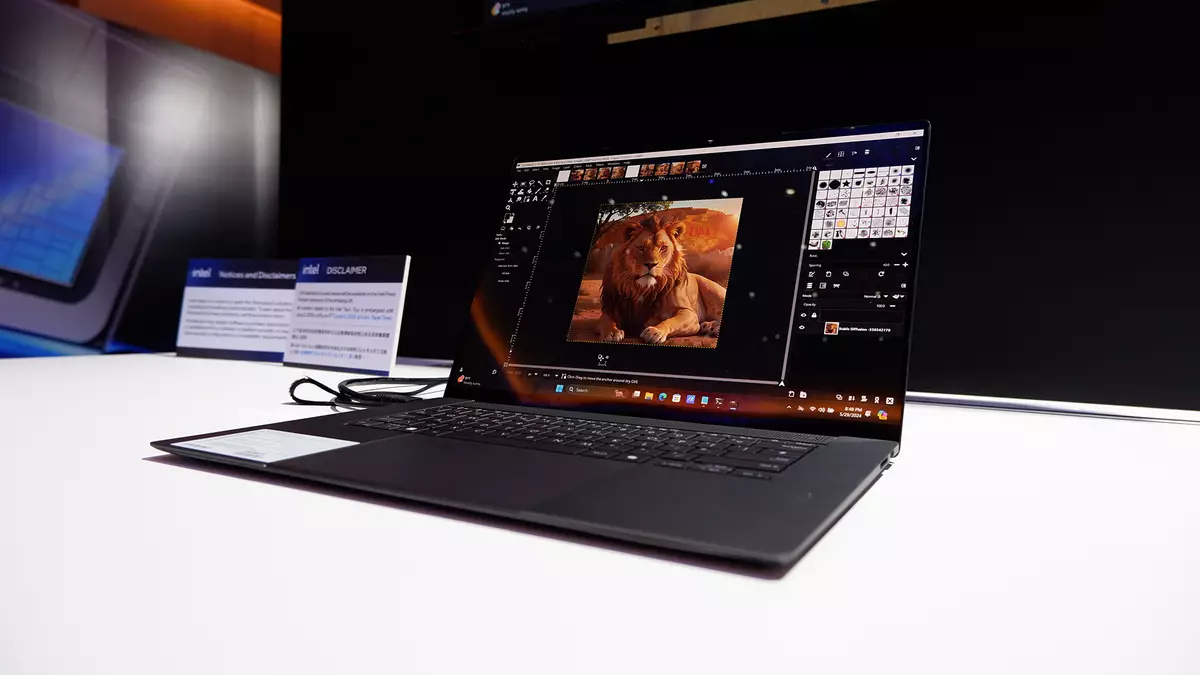As technology continues to advance at a dizzying pace, the race for more efficient mobile devices has picked up significant momentum. Intel has made headlines recently with its announcement of the Lunar Lake mobile chips, billing them as the most efficient x86 processors to date. The optimism surrounding these chips is buoyed by accompanying innovations in display technology, particularly from BOE with its new Winning Display 1Hz technology. Together, these developments could redefine the limits of battery life in mobile devices, all while delivering a performance capable of supporting demanding tasks like gaming.
The essence of mobile device performance lies in the delicate balance between power consumption and processing capability. Battery life has traditionally been a stumbling block for manufacturers, especially in a market where users demand lightweight devices that can do it all—from browsing the web and streaming videos to high-intensive gaming. Any development that promises to dramatically reduce power consumption while maintaining performance is particularly tantalizing.
Recent reports indicate that BOE’s integration of its Winning Display 1Hz technology with Intel’s Intelligent Display Technology (IIDT) V2 could potentially reduce display power consumption by as much as 65%. This figure is staggering and suggests that upcoming devices could offer extended usage times, enabling a more versatile mobile experience without constant charging. However, it’s crucial to scrutinize the context behind such statistics; while a 65% reduction is highly attractive, it comes with nuances that merit exploration.
At the heart of Intel’s IIDT 2.0 are several innovative features designed to optimize refresh rates based on user activity. These include Autonomous Low Refresh Rate (ALLR), User-Based Refresh Rate (UBRR), and PixOptix technologies. The technology identifies the user’s presence and adjusts the refresh rate intelligently—lowering it when maximum responsiveness is unnecessary. This not only saves power but retains a smoother display experience when needed.
Moreover, by using artificial intelligence to control refresh rates for distinct screen areas, users could enjoy different levels of refresh according to the content being viewed. For instance, engaging with a video could maintain a high refresh rate for fluidity, while note-taking might occur at a much lower refresh rate. This granular control could lead to significant energy savings, demonstrating a shift from a one-size-fits-all approach to a more personalized user experience.
While the prospect of operating a display at a low refresh rate may seem dubious, the reported 1Hz implementation raises eyebrows. Such a setting hardly bears practical application in active use scenarios—who wants their screen operating at such limited capacity? However, the technology’s commendable optical flicker performance and alignment with Intel’s Low Power Display Technology (LPDT) standard add credibility to these developments.
It’s essential to highlight that advancements like this could pave the way for highly energy-efficient devices without compromising performance. ASUS has already indicated impressive battery life statistics—27 hours on a single charge with its Vivobook S 14—thanks to these efficiency enhancements. However, real-world application will ultimately dictate whether these theoretical improvements translate into tangible benefits for users.
Still, the concept of an adaptive refresh rate is fraught with potential complications. Intelligently adjusting refresh rates on a screen should theoretically enhance efficiency but could lead to user frustration. Continuous fluctuations in refresh rates might disrupt the viewing experience, echoing some of the issues observed with OLED screens and their burn-in protection mechanisms that occasionally activate at inconvenient moments.
As mobile technology continues its rapid evolution, it’s crucial for companies like Intel and BOE to navigate these nuances carefully. Striking the right balance between cutting-edge performance and user convenience will determine the long-term success of these innovative technologies. While the promise of prolonged battery life through intelligent display technologies is alluring, the actualization of a seamless and enjoyable user experience will prove paramount.
The emerging partnership between Intel’s Lunar Lake processors and BOE’s display developments heralds an exciting future for mobile computing. The potential for significant power savings, paired with compelling performance, could change how we view mobile efficiency. However, navigating the complexities of user experience is equally vital. As we stand on the precipice of this new era, it remains to be seen whether these innovations can live up to the lofty expectations they’ve set.

